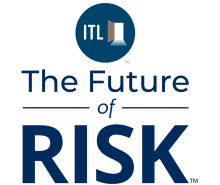Mergers and acquisitions (M&A) are occurring at a breakneck pace, with firms rushing to expand their footprint, unlock synergies, and gain a competitive edge. But success in M&A isn't measured by the number of deals closed or the splash they make — it's measured by what happens next.
The real work begins after the ink is dry. That's when teams face the hard part: integrating systems, aligning workflows, unifying cultures, and preserving the client experience. Too often, deals that look great on paper unravel in practice. Studies show that between 70% and 90% of M&A transactions fail to deliver the intended results, often due to poor post-merger integration.
Without a strong post-merger strategy, even the most promising acquisitions can lead to fragmentation, friction, and lost momentum. The deal isn't the win, it's just the starting line.
It's Not the Deal, It's the Alignment
Every acquirer comes with a playbook, and once the deal is signed, they'll expect new agencies to fall in line. That's not inherently a bad thing. But if you're not aligned on platform strategy, technology priorities, or cultural values, what seemed like a great opportunity can quickly turn into friction.
Misalignment on integration plans is one of the top reasons deals underperform or fail altogether. What begins as a growth story can end in stalled momentum, lost clients, and teams that feel more burdened than empowered.
Why Integration Stalls
Many agencies underestimate how hard integration really is. Even with the best intentions, focus can drift, priorities conflict, and progress stalls. The most successful integrations start with one thing: a clear, top-down definition of success. From there, leaders must set an adaptable path because mergers are rarely linear. Agility is key, but so is fortitude. You must finish what you start.
This is especially true when it comes to systems. Technology integration is one of the top two reasons M&A fails, followed by cultural misalignment. Yet most agencies still treat technology as an afterthought rather than a foundational pillar.
The Secret to Seamless Integration
Insurance operations are already complex, layered with regulatory nuance, product variability, and service obligations that differ from state to state. When two or more agencies merge, that complexity doesn't just double, it compounds. Disparate workflows, competing tech stacks, and varying definitions of "how things get done" can create a chaotic operating environment that bleeds time, trust, and profitability.
That's where standardization becomes a silent force multiplier. It isn't just about documentation or process control, it's about creating clarity across every layer of the business. Standardized processes reduce risk, drive consistency, and enable more confident decision-making at every level of the organization. When everyone is rowing in the same direction with the same tools, agencies can scale, not with chaos, but with confidence.
Tech as a Unifier, Not a Barrier
Before signing on the dotted line, agencies need to do more than analyze financials, they need to scrutinize their technology infrastructure. What systems are in place? Where do they overlap? What will be sunset, and what will remain mission-critical? Without clarity on these questions, integration efforts can spiral into costly delays, fragmented data, and staff confusion. It's like building a house on two different foundations — eventually, the cracks will show.
Technology should be viewed not as a post-merger clean-up task, but as a strategic enabler from day one. The most successful agency combinations prioritize tech alignment before the merger, ensuring shared systems can support everything from CRM and commissions to compliance and performance data. When technology is unified, it accelerates operational consistency, improves speed to value, and strengthens the client experience.
Trust Is the True Currency
In times of transition, transparency and delivery are everything. While leadership teams are focused on internal alignment, systems integration, and operational change, clients are watching for one thing, consistency. They don't care about your new logo, your press release, or how many agencies were acquired. They care that their questions get answered, their policies stay intact, and their experience doesn't suffer.
That's why transparency and follow-through are vital during a merger. Clear communication goes a long way in preserving loyalty. But communication alone isn't enough. What cements trust is execution. When you say you'll deliver (and you really do), your credibility strengthens at every touchpoint.
Positioning for What's Next
Consolidation isn't slowing down, and neither is innovation. New entrants will continue reshaping the landscape, bringing fresh solutions to long-standing inefficiencies.
The future belongs to agencies that align early, standardize boldly, invest in the right technology, and never lose sight of the trust that keeps clients coming back.






